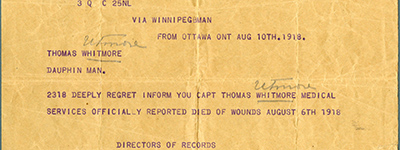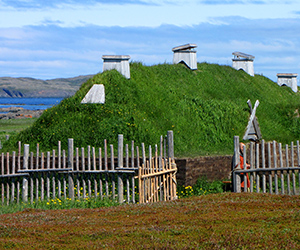CANADA HISTORY - Govenors General
The Duke of Devonshire

Victor Christian William Cavendish, the 9th Duke of Devonshire, served as the 11th Governor General of Canada from 1916 to 1921, a period marked by the turbulence of World War I, the transformative aftermath of the conflict, and significant social changes within Canada. Born on May 31, 1868, into one of England's most aristocratic families, Cavendish became a highly influential figure both in British and Canadian history. His time in Canada was defined by his deep engagement with the social and economic life of the Dominion, his advocacy for land development and agriculture, and his involvement in the political issues that defined the era.
Early Life and Political Career in Britain
Victor Cavendish was born into the prominent Cavendish family, a household that held immense wealth and influence in British society. His father, Lord Edward Cavendish, was the third son of the 7th Duke of Devonshire, and his mother was Emma Lascelles, a member of another aristocratic British family. Cavendish was educated at Eton and later attended Trinity College, Cambridge, where he developed strong ties with the British elite. His family connections also extended to Canada; Cavendish was the son-in-law of a former Governor General, Lord Lansdowne, which helped prepare him for his own later role in Canadian public life.
Cavendish began his political career as a member of the British House of Commons in 1891, representing the West Derbyshire constituency, a seat he held until 1908. As a young politician, he was known for his pragmatism and moderate conservatism, aligning himself with traditional aristocratic values while also showing interest in progressive social policies. When he succeeded his uncle in 1908 and became the 9th Duke of Devonshire, he transitioned from the House of Commons to the House of Lords. In this new role, Cavendish held several important positions within the British government, including Paymaster General and Civil Lord of the Admiralty, during the crucial years leading up to and during World War I.
His time at the Admiralty from 1915 to 1916 gave him insight into the naval side of the war effort, a perspective that would be valuable when he assumed his role as Governor General of Canada.
Appointment as Governor General of Canada
Victor Cavendish was appointed as Governor General of Canada during the height of World War I. He was sworn in on November 11, 1916, as the replacement for Prince Arthur, Duke of Connaught and Strathearn. His appointment came at a crucial time for Canada, which was undergoing significant transformations due to its contributions to the war effort. Cavendish’s background in British politics, along with his family ties to the former Governor General Lord Lansdowne, made him a suitable candidate for the position, especially as Britain sought to maintain close ties with Canada during this critical period.
Upon arriving in Canada, Cavendish was immediately immersed in the country’s economic and social challenges. One of his first tasks was to address the growing demands on Canada’s resources as the war continued to drain the nation’s manpower and economy. Cavendish quickly showed his interest in land development, agriculture, and housing, recognizing that these areas would be vital to rebuilding Canada after the war. He traveled extensively throughout the country, visiting farms, rural communities, and major cities, gaining a deep understanding of Canada’s diverse regions and their unique needs.
The War Years: Political Challenges and National Unity
The most pressing issue during Cavendish’s term as Governor General was World War I, and he played an important role in supporting the war effort. Under Prime Minister Sir Robert Borden, Canada had committed significant resources to the war, sending thousands of troops to fight in Europe. As casualties mounted and the war dragged on, the question of conscription became a deeply divisive issue in Canadian politics.
In 1917, Prime Minister Borden formed a Union Government, a coalition of Conservatives and pro-conscription Liberals, to introduce conscription. The Military Service Act, which made military service compulsory for certain groups, sparked fierce opposition, particularly in Quebec, where French Canadians strongly opposed being forced to fight in a war that they felt was not theirs. The issue of conscription widened the divide between English and French Canada, putting immense pressure on national unity.
As Governor General, Cavendish remained largely above the political fray, but his role was significant in ensuring that the machinery of government continued to function smoothly during this time of crisis. He supported Borden’s efforts to maintain national unity and offered moral support to the government as it navigated this challenging period. His ability to remain calm and composed during these tumultuous years helped solidify his reputation as a steady and pragmatic leader.
Cavendish also witnessed an important social milestone during his term. In the 1917 federal election, women who had close relatives serving in the military were granted the right to vote for the first time, a significant step toward broader women’s suffrage in Canada. This development was a reflection of the changing social landscape of the country, as women increasingly took on roles in the workforce and public life while men were away fighting in the war.
Post-War Reconstruction and Economic Development
With the end of World War I in 1918, Cavendish shifted his focus to the challenges of post-war reconstruction. Canada faced immense social and economic upheaval in the aftermath of the war, with thousands of soldiers returning home to a country that had been transformed by four years of conflict. The economy, which had been geared toward wartime production, needed to be realigned to meet peacetime demands.
Cavendish took a particular interest in land development and agriculture, recognizing that the revitalization of rural areas would be essential to Canada’s post-war recovery. He advocated for policies that promoted the development of new farming communities, encouraging veterans to settle on agricultural land. This initiative was part of a broader effort to reintegrate returning soldiers into civilian life and help stimulate the economy by expanding Canada’s agricultural output.
His involvement in land development initiatives reflected his aristocratic background as one of England’s largest landowners, but it also demonstrated his practical understanding of Canada’s unique needs as a growing nation. Cavendish’s advocacy for agriculture and housing helped lay the groundwork for Canada’s post-war recovery and contributed to the nation’s long-term economic stability.
The Prince of Wales’ Visit and Personal Life
During Cavendish’s term as Governor General, Canada hosted a royal tour by Edward, Prince of Wales, in 1919. The visit was part of a broader effort to strengthen ties between Canada and the British monarchy, which had been tested by the pressures of World War I. The Prince’s tour was well-received by the Canadian public, and Cavendish played a key role in organizing the visit and ensuring its success. The tour helped reinforce Canada’s loyalty to the Crown and provided a sense of national unity during a time of social and political change.
On a personal level, Cavendish’s family was deeply involved in the social life of the Governor General’s office. His wife, Lady Evelyn Cavendish, was an accomplished hostess who helped maintain the traditions of British aristocracy at Rideau Hall. The family’s connections to British high society were further solidified when Cavendish’s daughter, Lady Dorothy Cavendish, married Captain Harold Macmillan, who would later become Prime Minister of the United Kingdom. This marriage was an important event during Cavendish’s time in Canada, and he traveled to England in 1921 to attend the ceremony.
End of Term and Return to Britain
Victor Cavendish’s term as Governor General came to an end in July 1921. By that time, Canada had emerged from the war as a more independent and assertive nation, increasingly defining its identity separate from Britain. Cavendish’s steady leadership during the war years and his commitment to economic development and national unity helped Canada navigate this challenging period.
After leaving office, Cavendish returned to Britain, where he continued his public service. He was appointed Secretary of State for the Colonies, a position he held from 1922 to 1924. In this role, Cavendish was responsible for overseeing British colonial policy during a time when the British Empire was facing increasing pressure from nationalist movements around the world. His experience in Canada helped inform his approach to colonial governance, particularly in terms of promoting economic development and fostering closer ties between Britain and its dominions.
Cavendish also served as Lord Lieutenant of Derbyshire and Chancellor of the University of Leeds. His deep involvement in public life continued until his death on May 6, 1938, at his estate, Chatsworth House, in Derbyshire. Tragically, his eldest son had been killed in action during World War I, and the title of Duke of Devonshire passed to his second son, Lord Edward William Spencer Cavendish.
Legacy
Victor Cavendish’s tenure as Governor General of Canada is remembered as a period of steady, pragmatic leadership during one of the most challenging times in Canadian history. His background as a British aristocrat and his extensive experience in British politics allowed him to navigate the complexities of wartime governance and post-war reconstruction with confidence and grace.
Cavendish’s interest in agriculture and land development, as well as his support for veterans and his promotion of national unity, left a lasting impact on Canada’s social and economic fabric. His term also coincided with important milestones in Canadian democracy, including the expansion of women’s suffrage and the establishment of conscription, both of which would shape the country’s future.
While his personal wealth and aristocratic background made him a symbol of British tradition, Cavendish’s time in Canada was defined by his genuine interest in the well-being of the Dominion and its people. His legacy as Governor General is one of service, stability, and a deep commitment to the development of Canada during a transformative period in its history.
Cite Article : Reference: www.canadahistory.com/sections/documents/documents.html
Source: NA



